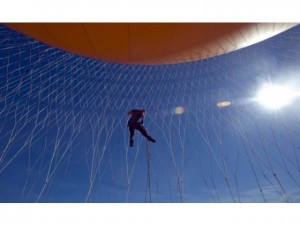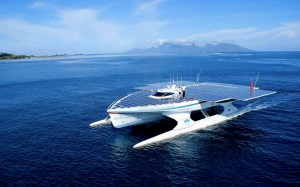On Sunday, May 20, an annular solar eclipse will be visible to those who live on the West Coast. Watching a solar  eclipse can be an exciting and educational experience, but people
eclipse can be an exciting and educational experience, but people  should do so safely, warns the American Optometric Association (AOA). Looking at a solar eclipse without proper protection can result in serious eye damage, the association says. A solar eclipse occurs when the sun, earth and moon are positioned nearly in a straight line. The moon comes directly between the sun and the earth, casting a shadow on the earth’s surface. The solar eclipse is visible from the earth in the areas where the moon’s shadow falls. The May 20 eclipse will be visible on the West Coast of North America and will begin at approximately 5:24 p.m. Pacific Daylight Time.Early on May 21, viewers in Asia will also be able to experience the eclipse.
should do so safely, warns the American Optometric Association (AOA). Looking at a solar eclipse without proper protection can result in serious eye damage, the association says. A solar eclipse occurs when the sun, earth and moon are positioned nearly in a straight line. The moon comes directly between the sun and the earth, casting a shadow on the earth’s surface. The solar eclipse is visible from the earth in the areas where the moon’s shadow falls. The May 20 eclipse will be visible on the West Coast of North America and will begin at approximately 5:24 p.m. Pacific Daylight Time.Early on May 21, viewers in Asia will also be able to experience the eclipse.
During most of a solar eclipse, at least part of the sun’s rays remain visible, therefore the sun’s rays can burn the eye’s retina if a viewer looks directly at the eclipse without protection. The retina is the delicate lining at the back of the eye that contains layers of light-sensitive nerve cells used for seeing. Retinal burns cause a temporary or permanent vision loss based on the degree of exposure. Light-induced retinal injuries can occur without any feeling of pain and the effects of the injuries may not appear for at least several hours after the damage is done.
The AOA warns consumers to avoid viewing a partial solar eclipse with the naked eye. Also unsafe are: sunglasses, color film, black and white film, medical x-ray films with images on them, smoked glass, photographic neutral density filters and polarizing filters. The AOA recommends viewing the solar eclipse safely with such methods as the use of an image projection device, such as a pinhole projector (which can be constructed at home), or wearing a solar viewing filter to protect the eyes. Examples of safe solar viewing filters include shade number 14 welder’s glass (available from welding supply outlets) or glasses (available through special manufacturers) constructed specifically for solar observation.







